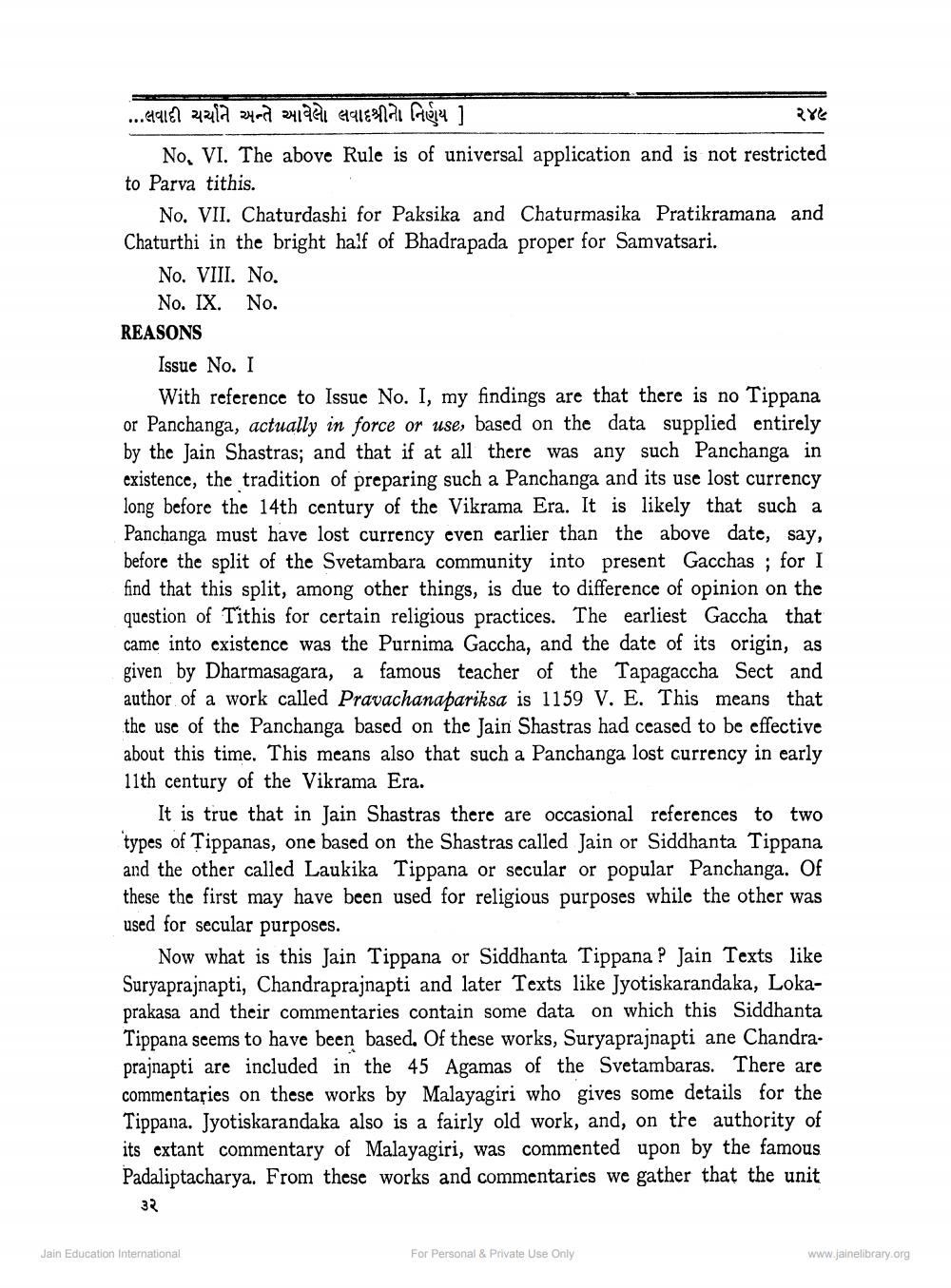________________
...લવાદી ચર્ચાને અન્તે આવેલા લવાદશ્રીના નિર્ણય ]
No, VI. The above Rule is of universal application and is not restricted to Parva tithis.
No. VII. Chaturdashi for Paksika and Chaturmasika Pratikramana and Chaturthi in the bright half of Bhadrapada proper for Samvatsari.
No. VIII, No.
No. IX. No.
REASONS
Issue No. I
With reference to Issue No. I, my findings are that there is no Tippana or Panchanga, actually in force or use, based on the data supplied entirely by the Jain Shastras; and that if at all there was any such Panchanga in existence, the tradition of preparing such a Panchanga and its use lost currency long before the 14th century of the Vikrama Era. It is likely that such a Panchanga must have lost currency even earlier than the above date, say, before the split of the Svetambara community into present Gacchas; for I find that this split, among other things, is due to difference of opinion on the question of Tithis for certain religious practices. The earliest Gaccha that came into existence was the Purnima Gaccha, and the date of its origin, as given by Dharmasagara, a famous teacher of the Tapagaccha Sect and author of a work called Pravachanapariksa is 1159 V. E. This means that the use of the Panchanga based on the Jain Shastras had ceased to be effective about this time. This means also that such a Panchanga lost currency in early 11th century of the Vikrama Era.
૨૪૯
It is true that in Jain Shastras there are occasional references to two types of Tippanas, one based on the Shastras called Jain or Siddhanta Tippana and the other called Laukika Tippana or secular or popular Panchanga. Of these the first may have been used for religious purposes while the other was used for secular purposes.
Now what is this Jain Tippana or Siddhanta Tippana? Jain Texts like Suryaprajnapti, Chandraprajnapti and later Texts like Jyotiskarandaka, Lokaprakasa and their commentaries contain some data on which this Siddhanta Tippana seems to have been based. Of these works, Suryaprajnapti ane Chandraprajnapti are included in the 45 Agamas of the Svetambaras. There are commentaries on these works by Malayagiri who gives some details for the Tippana. Jyotiskarandaka also is a fairly old work, and, on the authority of its extant commentary of Malayagiri, was commented upon by the famous Padaliptacharya. From these works and commentaries we gather that the unit
૩૨
Jain Education International
For Personal & Private Use Only
www.jainelibrary.org




